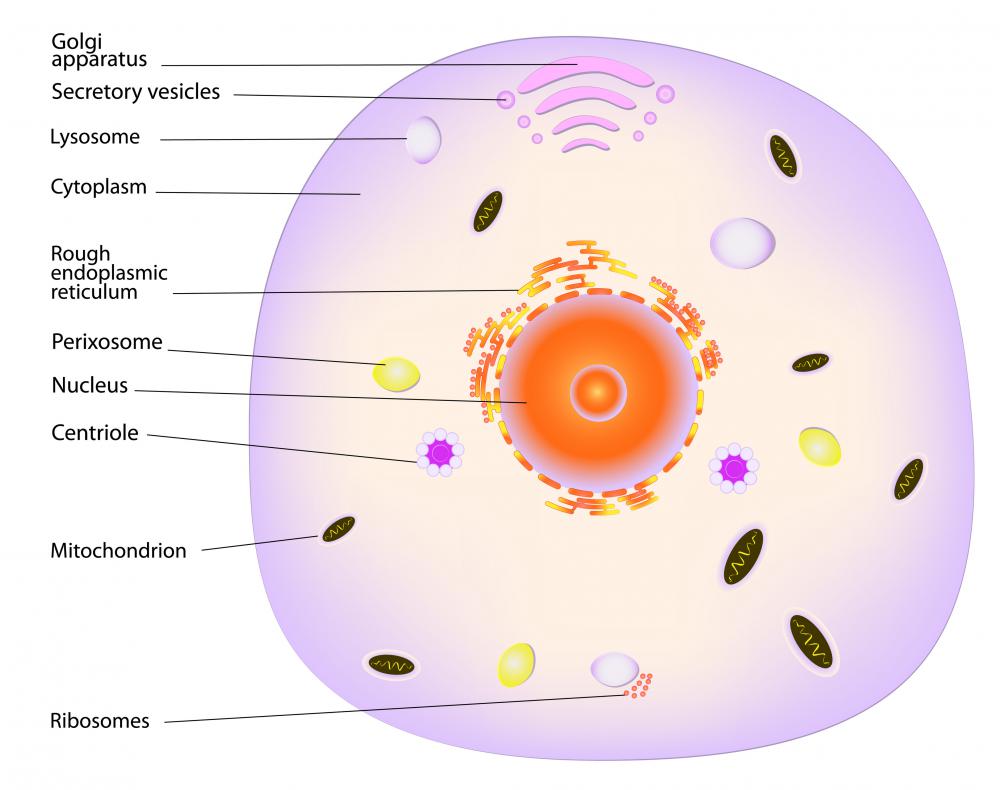At WiseGEEK, we're committed to delivering accurate, trustworthy information. Our expert-authored content is rigorously fact-checked and sourced from credible authorities. Discover how we uphold the highest standards in providing you with reliable knowledge.
What Is Cell Protein Synthesis?
Cell protein synthesis is the process through which deoxyribonucleic acid (DNA) is converted into amino acids that are subsequently combined into a protein for use by the body. The process begins with DNA in the center of a cell, also called the nucleus. After the DNA is copied onto a special ribonucleic acid (RNA) strand, that strand is moved into the outer area of the cell called the cytoplasm. Once in the cytoplasm, a large structure known as a ribosome combines RNA into amino acids and then arranges the amino acids together to form completed proteins.
The cell protein synthesis process begins with a function known as transcription that takes place in the nucleus of a cell. A special enzyme takes a single side of a strand of DNA and encodes the nucleotide sequence onto a specific type of RNA known as messenger RNA (mRNA). The mRNA then moves out of the nucleus into the cell’s cytoplasm. Here it meets with a complex structure called a ribosome to begin the next stage of the process.

Once the mRNA has met with a ribosome, the process of translation begins. The ribosome reads and copies the nucleotide sequence from the mRNA onto another strand, known as transfer RNA (tRNA). The tRNA contains the exact sequence required to create an amino acid, also called a peptide. Within the structure of the ribosome, several peptide sequences are combined to make the base for a protein called a polypeptide. Polypeptides are one of the last steps in cell protein synthesis.

Polypeptides are released from the ribosome after carbohydrates are added. The result is a completed protein. Proteins come in many varieties but are commonly found either as long strands or as small globules. The long strands are used to build and maintain physical parts of the body, while the globules are primarily used to interact with cells, hormones and enzymes.
Inside the nucleus, cell protein synthesis cannot begin without the production of the necessary amino acids. These amino acids are created by combining different elements in a biochemical process involving special enzymes. Many of the compounds required to make the amino acids must be acquired through diet. Just more than half of the required compounds, however, can be produced within the body.
During the cell protein synthesis process, certain problems can arise. One situation that can occur is the introduction of RNA viruses. These viruses can reach a ribosome and corrupt the chain of peptide sequences leading to the production of viral proteins that can cause harm to the body.
AS FEATURED ON:
AS FEATURED ON:












Discuss this Article
Post your comments